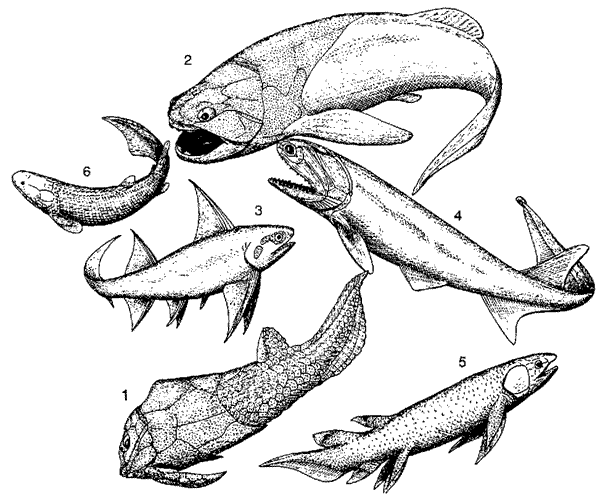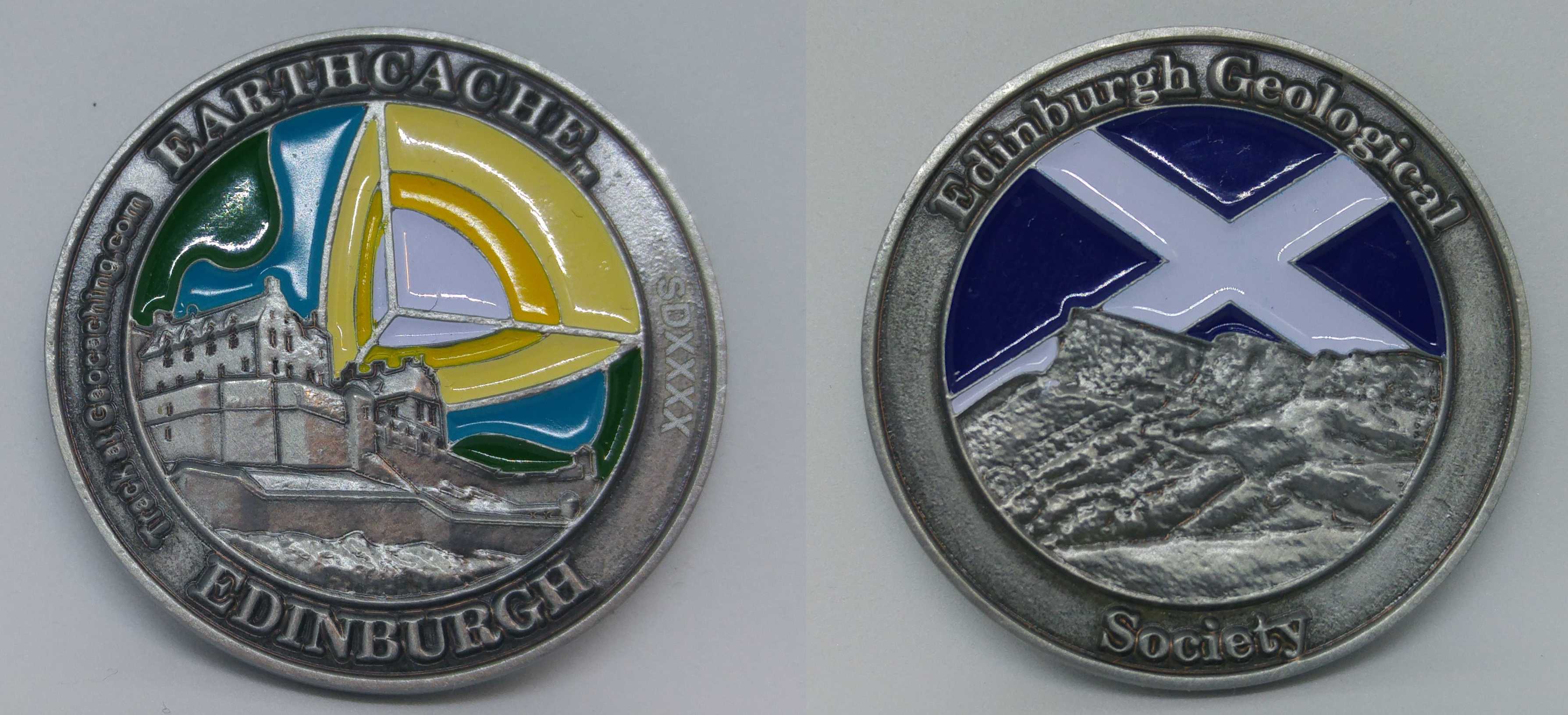Located in the paving stones here is a fossil fish from the Devonian period (416-358mya). It can be quite difficult to see if the pavement is wet - try to do this cache on a dry morning when the sun is shining right here. There is a spoiler photo if you need help.
The Devonian period has been called "The Age of Fish" due to the major developments that fish went through over this time. All four classes of fish living today were established by the middle of this period. New quarrying methods bypass fossil finds, putting them literally under our noses, waiting for people to spot them. A number of fossils have been found in the paving slabs of Edinburgh's streets - Devonian fish and plants. East Market Street, the plaza around the Scottish Parliament buildings, Lothian Road, have all had finds. See the related web page for some "rescue archaeology" in which a number of excellent specimens were recovered from the streets of Edinburgh and are being studied at the British Geological Survey, with assistance from the Royal Hospital for Sick Children who CT-scanned the fossils.

Fishes of the Middle Devonian locality of Lethen Bar, in Scotland, about 377 Ma). They include antiarchs 1 Pterichthyodes); and arthrodire 2. Coccosteus) placoderms, acanthodians 3. Diplacanthus), ray-finned fish (4, Cheirolepis), lungfish 5, Dipterus), and osteolepiform lobe-finned fish (6. Osteolepis), representing the lineage that gave rise to land animals. Drawing from Palaeos Paleozoic under CCL.
The paving stones in this area were sourced from the Achscrabster Quarry in Sutherland and are fine-grained siltstones that were laid down in the Orcadian lake system of 370 million years ago. These rocks have held many fossil fish and were known to pioneers of geology such as Hugh Miller and Louis Agassiz, and new species are still being discovered such as the lungfish Pinnalongus saxoni in 2007.
Considering this sample, please send answers to the following questions to the CO
- The fossil is a distinctive colour - what is it?
- Please give the length of the fossil to the nearest cm.
- How wide is the head of the fossil to the nearest cm?
- How many distinct fins can you idenitfy?
- Given its current placement, in which direction is it swimming? Please give the answer to the closest 10 degrees.
- Comparing this fossil with the image given above, of which fish do you think this most likely to be a fossil?
- Considering its location, if you were to return in ten years time, what changes would you expect to see in the fossil?
Please send the answers to the CO before logging the cache. If there is a problem with your answers, I will contact you.
Edinburgh Geological Society bulletin article.

This cache was part of the Edinburgh Earthcache weekend and geocoins are available here